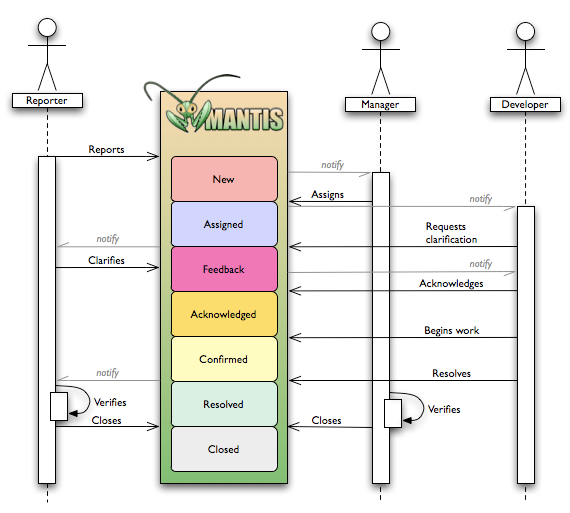Difference between revisions of "Documentation/Nightly/Report a problem"
From Slicer Wiki
| Line 24: | Line 24: | ||
* Copy-paste the error log: you can access it from Slicer in the menu: Help / Report a bug. By default log of the current session is displayed but you can retrieve the logs of the last few sessions | * Copy-paste the error log: you can access it from Slicer in the menu: Help / Report a bug. By default log of the current session is displayed but you can retrieve the logs of the last few sessions | ||
* Optional: capture a screenshot that illustrates the issue | * Optional: capture a screenshot that illustrates the issue | ||
| + | |||
| + | That could be summarized by the SSCCE (Short, Self Contained, Correct (Compilable), Example) approach documented on http://sscce.org | ||
==Workflow for Handling Bugs and Feature Requests in Slicer== | ==Workflow for Handling Bugs and Feature Requests in Slicer== | ||
Revision as of 21:25, 9 October 2015
Home < Documentation < Nightly < Report a problem
|
For the latest Slicer documentation, visit the read-the-docs. |
User Feedback
- I have a question about how to use Slicer for a particular task or I'm not sure things are working right
- Try your best to sort out the issue by reading documentation, mailing list archives, and checking error logs
- Look at our portfolio of training materials and make a google search to see, if the question has been discussed in the mailinglists.
- I am still unclear about what to do. In this case, sign up for the slicer user mailing list and ask your question there
- Check the Error Log to see if there's something misconfigured, such as a directory that is not readable or writable.
- Try your best to sort out the issue by reading documentation, mailing list archives, and checking error logs
- Something is definitely not working as it should or I would like to request a feature.
- File a bug report in the issues tracker (you need to register first) or on the Slicer users mailing list. It is important to provide enough specific information so that a software developer can duplicate the problem - see details below.
- Don't be anonymous: real people trying hard to solve real problems are more likely to get valuable help. A vague question from a random email is likely to be ignored..
- I would like to let the Slicer community know, how Slicer helped me in my research.
- Please send us the citation for your paper.
- Background: funding for Slicer is provided through competitive mechanisms to a large extent by the US government and to a lesser extend through funding from other governments. The justification of for those resources is that Slicer enables scientific work. Knowing about scientific publications enabled by Slicer is a critical step in this process. Given the international nature of the Slicer community, the nationality of the scientists is not important. Every good paper counts.
- I would like to give feedback on my experience with Slicer.
- Share your story using the Feedback link accessible from the Slicer Welcome module
Error report contents
- Describe:
- What steps were performed before the problem occurred
- What behavior you expected
- What happened instead
- Copy-paste the error log: you can access it from Slicer in the menu: Help / Report a bug. By default log of the current session is displayed but you can retrieve the logs of the last few sessions
- Optional: capture a screenshot that illustrates the issue
That could be summarized by the SSCCE (Short, Self Contained, Correct (Compilable), Example) approach documented on http://sscce.org
Workflow for Handling Bugs and Feature Requests in Slicer
The following instructions describes the recommended workflow to report a problem related to Slicer application.
- 1. Register on the issue tracker
- 2. Sign-up on the developers mailing list
- 3. Create an issue in the tracker.
- 4. Optionally, if you would like to share dataset >= 2MB, you should consider uploading them on our dedicated server. See How to share and associate data with an issue
- 5. Send an email on the slicer-developers list pointing to the reported bug. Title of the email should start with
[BUG 1234] Title of the bug
The following diagram illustrates Slicer issue workflow:
Source: Adapted from http://www.warelab.org/blog/?p=24
